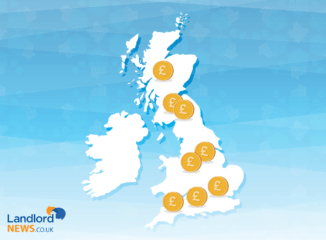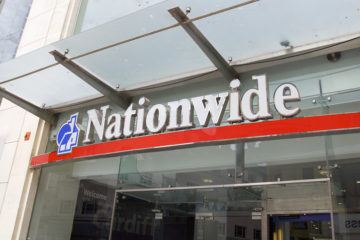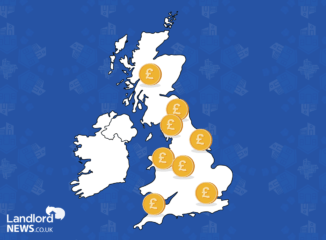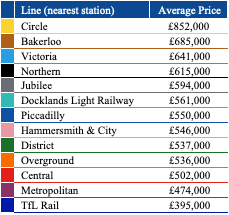The latest government UK House Price Index has been released, showing that house prices have increased by 10% in the year to May 2021.
The average price of a UK property during May was £254,624 and there was a monthly price change of 0.9%, the report states.
Marc von Grundherr, Director of Benham and Reeves, comments: “It’s clear that the extension of the Stamp Duty holiday caused the market to rebound immediately from the decline in market performance seen as a result of the original deadline.
“Of course, it’s simply irresponsible to measure the health of the market based on a metric as erratic as the monthly rate of house price growth and anyone who seeks to do so would do well to retire their crystal ball to the cupboard from which it came.
“The real proof in the pudding is the extremely strong performance seen on an annual basis and one that continues to defy expectation despite fears the market could soon run out of steam.
“While London continues to trail the rest of the market in this respect, we’re beginning to see the cogs start to turn, driven by a return to the workplace and pre-emptive demand from foreign buyers in anticipation of a move later in the year. As a result, the London property market will continue to build momentum long after the carrot of a Stamp Duty reprieve has been removed.”
James Forrester, Managing Director of Barrows and Forrester, comments: “The property market continues to move forward at an alarming pace, powered by a full tank of buyer demand and a shortage of housing stock to satisfy this hunger for homeownership. While the end of the Stamp Duty holiday may well act as a slight bump in the road, it will take far more than a marginal decline in homebuyer sentiment to cause the wheels to fall off.”
Matthew Cooper, Founder & Managing Director of Yes Homebuyers, comments: “It’s abundantly clear that the market came to a shuddering halt due to the original Stamp Duty deadline and while we may now see transactions and house price growth yo-yo due to the double-pronged extension, there’s no hiding the fact that a correction is on its way.
“While the government may claim they have successfully kept the market afloat during the pandemic, the reality couldn’t be more different. House price affordability has spiralled and is now even further out of reach for the average homebuyer. Those lucky enough to secure a purchase remain bogged down in lengthy market delays and rather than build more homes, the government continues to feed the furnace to keep property values artificially inflated.
“It’s a real mess and one that will take some time to clean up once it does inevitably hit the fan.”
Ged McPartlin, Managing Director of Ascend Properties, comments: “House prices continue to boom, with the North West sitting on pole and driving market performance in this respect.
“It’s clear that the north-south divide has never been wider and while this momentous rate of price growth must inevitably slow at some point, we expect this vast difference in property pedigree to remain as buyers in the North continue to benefit from a far more affordable market, with, or without the benefit of a Stamp Duty saving.”
Lucy Pendleton, property expert at independent estate agents James Pendleton, says: “The latest UK HPI figures reflect sales that completed in May when buyers were still enjoying the full Stamp Duty holiday. At that time, the atmosphere was frenzied as buyers sprinted to complete sales before the end of June.
“Price growth has cooled a little since the deadline has passed, but the cliff-edge scenario many were predicting hasn’t played out. Prices haven’t collapsed, very few transactions have fallen through and we are seeing a healthy level of new instructions.
“This can be attributed to a number of factors. The race for space in many areas of the country hasn’t abated and demand remains at levels we were seeing several months ago.
“There’s still a lack of good quality stock coming onto the market, which means buyers are less worried about missing out on the full tax benefit as they are on a particular property. If anything, it’s a minor inconvenience for buyers, and not critical enough to derail transactions.
“The Stamp Duty break tapering off, rather than being cut off immediately at the end of June, has also avoided the prospect of a wave of transactions collapsing near the finishing line.
“Buyers don’t feel under pressure to complete and sellers feel more comfortable about listing knowing transactions aren’t likely to fail, and I don’t see that changing even as we approach the end of September, when the tapered relief ends.
“We are also expecting to see a buoyant market over the summer, when typically, activity drops off. With the majority of families holidaying at home this year, and many choosing to delay their holidays, more people will take this opportunity to push through house sales and purchases.
“London may have seen the slowest growth of any area over the past year, but there are also positive signs it’s finally waking from its slumber, as more restrictions have been lifted.
“And while the legacy of the pandemic is likely to see many businesses adopting flexible working policies, and fewer people having to commute into work full-time, the bright lights of the big city, and what it has to offer, still has a tremendous appeal.
“As soon as the Capital opens fully again, we are confident the property market will burst back into life.”
Iain McKenzie, CEO of The Guild of Property Professionals, says: “All good things must come to an end, and these figures capture the final frenzy to make the most of Government incentives to buy in the month before the Stamp Duty holiday began to be scaled back.
“However, several indicators show the enthusiasm is still thrumming through the property market, with mortgage approvals higher in May than they were in April.
“London has seen the slowest growth in house prices, partly owing to an already inflated market and large numbers of people who have moved out of the capital during the pandemic.
“Meanwhile, the North West has seen the largest jump in house prices as home-movers look for more space and value for money.
“There could be some fluctuation in the months ahead, but we are still anticipating prices to remain high. Lifestyle changes mean high demand will outlast the final closure of the Stamp Duty holiday at the beginning of October.”
Nicky Stevenson, Managing Director at national estate agent group Fine & Country, says: “The housing market has been running much hotter and faster than anyone expected, and despite a slight softening last month, today’s data shows there’s plenty of momentum still left.
“Low borrowing costs, reduced supply and an insatiable demand for bigger homes has spurred bidding wars and a spike in house values across the country.
“And while we may see growth start to decelerate slightly later in the year as the Stamp Duty holiday is phased out, the dizzying boom we are currently enjoying shows no sign of dipping.
“The remainder of the summer promises more breath-taking annual gains, with price growth in the North West continuing to set the pace.
“While the Stamp Duty holiday helped power the rally, momentum is now so strong that a phased return to full rates shouldn’t signal the beginning of a slump.
“And though growth in London remains the lowest in the country, it too is starting to pick up steam.
“Expect the tail of this boom to go on and on.”





